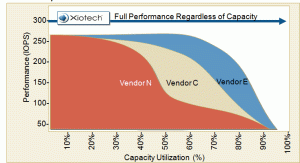Cool things Commvault is doing with REST
I’ve always been a HUGE fan of Commvault. They just rock. When I was a Systems Engineer back in Austin in the early 2000’s, I don’t think we had an account that I didn’t take Commvault into to try and solve a customer’s backup issues. AND WE DIDN’T EVEN SELL COMMVAULT !!! They had such cool technology that was clearly leaps and bounds above everyone else. Not to mention, they had some really cool people that worked for them as well (Shout out to Jeanna, Joelle, RobK and of course Mr Cowgil).
Fast forward a few years and the release of Simpana as well as the addition of native DeDuplication clearly gave Data Domain and various other deduplication solutions a run for their money. You would think that would be enough for one company!! I was pretty excited about their recent press release around adding cloud data storage as a tier option in Simpana. Dave Raffo over at SearchDataBackup.Com did a really nice job of summarizing the announcement. It’s a clear sign that Commvault is still very much an engineering driven organization. Which is just AWESOME!!
I think the biggest nugget that I pulled out of the press release is Commvault’s ability to integrate native REST capabilities. The more and more I hear about REST’s potential, the more I get excited about some of the endless possibilities it can offer. In this case, it allowed Commvault to easily integrate their backup architecture to include 3rd party cloud solutions like Amazon S3, EMC Atmos and a slew of others. They didn’t need to build an API for each vendor; they just relied on REST’s open API to do that for them.
If you haven’t had a chance you should check out Brian Reagan’s blog posting that mentions something we are calling CorteX. Essentially CorteX is our RESTful based ecosystem on which developers can gain access to our Emprise solutions. This is the next evolutionary step in our ongoing open architecture capabilities. As some of you are aware, we’ve been touting our WebService’s Software Development Kit for some time. It’s allowed us to do things like VMWare Virtual View which ties directly into Virtual Center to give VMWare Admin’s unprecedented abilities, as well as Microsoft developers creating a provisioning application called SANMAN that integrates some of their processes directly to our storage. RESTful API will take this to a greater level. Just like Commvault was able to tie directly into public cloud storage providers, CorteX will give unprecedented abilities to do really cool things.
I’ve probably said more then I should 🙂 So I’ll leave it with “more to come on CorteX as we get ready to release”. I’ve probably stolen enough of Brian’s thunder to get an e-mail from him!! It’s always good to hear from a Sr VP right!!
So, keep an eye on Xiotech over the next couple of months and start paying attention to vendors that support RESTful API’s !!!
Thanks,
@StorageTexan

